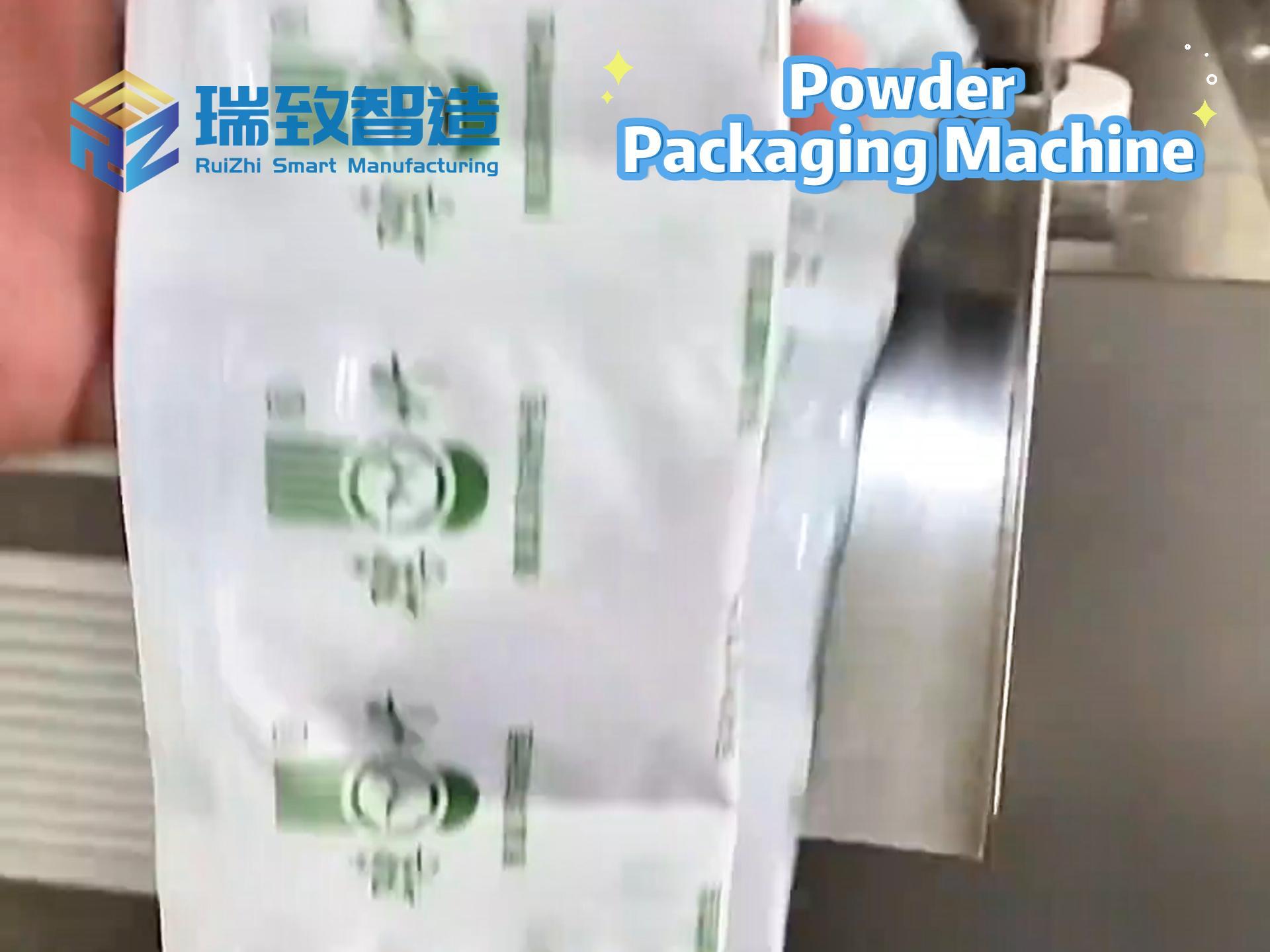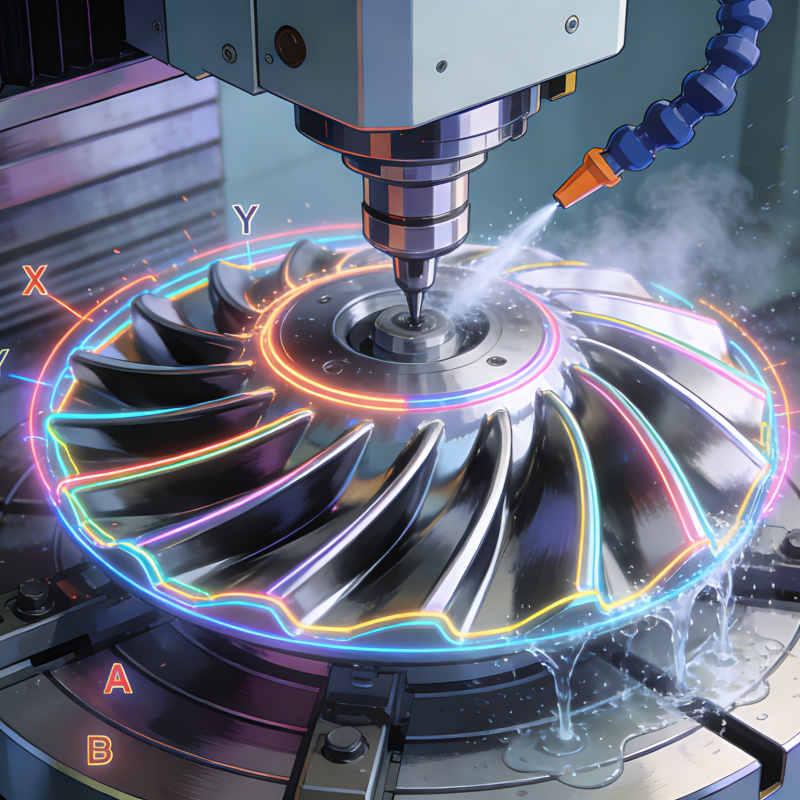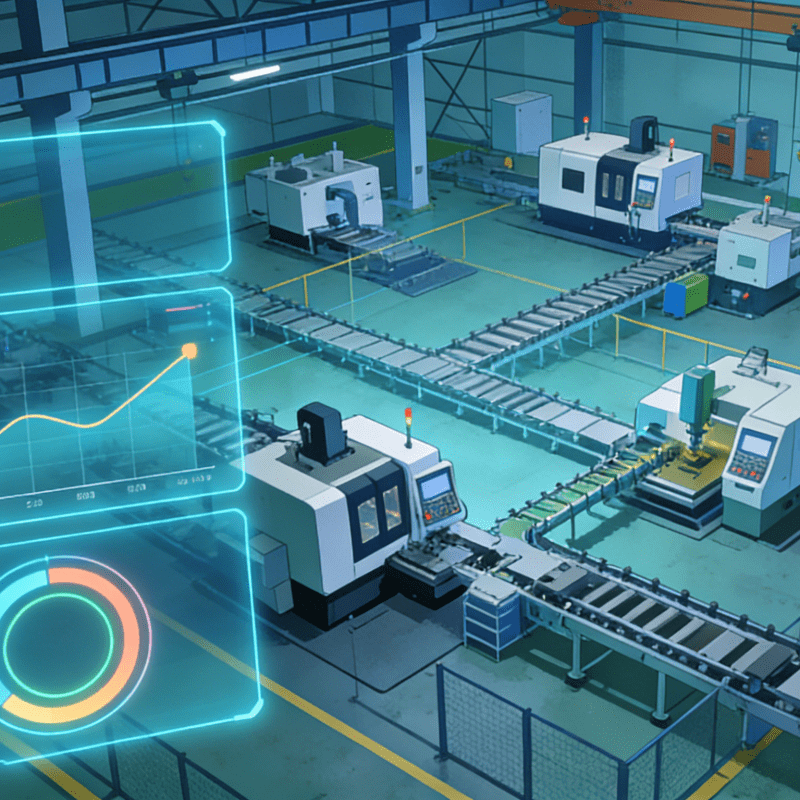Scene Spotlight:
In the scheduling room of an automotive parts factory, Production Manager Engineer Li is overwhelmed while staring at two screens — on the left is an urgent order from an OEM: 2,000 sets of new energy vehicle electronic control units need to be delivered tomorrow with zero defects; on the right is the aftermarket order pool: sensors in 37 models and bearings in 52 specifications, with the smallest order being only 50 pieces. The traditional production line, frequently switching between “large OEM batches” and “small aftermarket batches,” has seen a 30% surge in equipment failure rates and a drop in on-time order delivery rates below 70%. Penalty notices from OEMs and complaint calls from aftermarket customers keep pouring in.
I. The “Dual-track Demand” Deadlock in the Automotive Parts Industry
1. OEM vs Aftermarket: A Paradox of Polarized Demands
OEM’s Rigid Demands:
Following the JIT (Just-In-Time) production model, requiring batch order response within 48 hours and a quality defect rate < 0.1 PPM (e.g., an OEM forfeited 12 million yuan from a supplier due to batch defects in sensors);
Production lines need to support high-speed continuous production of single varieties (e.g., the cycle time of a transmission gear production line reaches 8 seconds/piece).
Aftermarket Characteristics:
Multi-variety (over 2,000 SKUs), small-batch (70% of orders < 100 pieces), and high-frequency (50+ new repair part models added monthly);
A factory’s statistics show that the number of changeovers for aftermarket orders is 5 times that of OEM orders, but output value only accounts for 30%. The gross profit margin for producing aftermarket parts on traditional lines is less than 15%, approaching the loss threshold.
2. Three Core Pain Points, Each Cutting Deep
(1) Alarming Capacity Switching Losses
When switching from OEM orders to aftermarket parts, molds need to be replaced, process parameters adjusted, and production lines cleaned (e.g., to prevent metal debris from contaminating precision sensors). Each changeover takes 4-6 hours, equivalent to wasting 1/3 of daily capacity;
A brake system supplier’s Overall Equipment Effectiveness (OEE) was only 55% due to frequent changeovers, 30 percentage points lower than the industry excellent level (85%).
(2) Inventory Black Holes Devouring Profits
To meet OEM JIT requirements, large inventories of general parts (such as bearings and seals) are stockpiled. However, aftermarket demand fluctuates greatly, with 20% of inventory remaining unsold for three years, tying up over 50 million yuan in funds;
Traditional MRP systems cannot balance “scale production for OEMs” and “flexible supply for aftermarket parts.” A factory once overstocked 100,000 shock absorbers due to misjudging demand for a certain model, eventually selling them at a 70% discount.
(3) Risks of Quality Traceability 断层 (Discontinuity)
OEMs require full-life cycle traceability (all process data from raw materials to vehicle assembly), but during aftermarket part production, traditional paper records cannot be real-time associated with equipment parameters. A batch of steering knuckles failed to be traced due to incorrect heat treatment parameters, causing an 8-hour production line shutdown for the OEM and a claim of 8 million yuan.
II. The “Trinity” Solution of Flexible Automation to Crack Dual-track Demands
1. Dual-mode Production System: One-click Switch Between “Scale Mode” and “Flexible Mode”
(1) Hardware Layer: Modular Production Line Design
OEM Mode:
Activate high-speed rigid units (such as fully automatic forging lines with a cycle time of 6 seconds/piece), combined with a mold quick-change system (hydraulic drive + positioning pin automatic alignment, completing mold replacement in 5 minutes);
Aftermarket Mode:
Switch to flexible units (such as collaborative robots + adjustable tooling tables), with robotic arm end effectors supporting the grabbing of 10 different 规格 (specifications) of bearings (automatically matching fixture postures through visual recognition);
Case: After deploying dual-mode production lines, a chassis parts supplier increased OEM order capacity by 25%, reduced aftermarket part changeover time from 4 hours to 20 minutes, and raised the gross profit margin for small-batch orders from 12% to 28%.
(2) Software Layer: Dual-mode Scheduling Engine
Develop intelligent order classification algorithms:
Automatically identify “large OEM orders” (>1,000 pieces) and “small aftermarket orders” (<500 pieces), with the former entering rigid lines for high-speed production and the latter 导入 (imported into) flexible units for mixed-line production;
After application in a factory, the production line load balance rate increased from 60% to 90%, the on-time delivery rate for OEM orders rose to 98%, and the aftermarket part delivery cycle was reduced from 7 days to 3 days.
2. Intelligent Inventory Network: Balancing Dual-track Demands with “Dynamic Buffer”
(1) Three-level Inventory Architecture
Inventory Level Positioning Management Strategy Technical Support
Strategic Inventory OEM general parts (e.g., bolts, gaskets) Safety stock set based on historical data prediction (30-day turnover cycle) Blockchain traceability + Demand Planning algorithm
Flexible Inventory Aftermarket semi-finished products (e.g., unpainted housings) Stocked by “minimum processing steps,” with rapid completion of personalized processing after order receipt (e.g., drilling, coating) Digital twin simulates optimal stock level
Line-side Inventory OEM-specific parts (e.g., bearings for new energy vehicles) JIT pull 式 (pull-type) management, directly connected to OEM MES, with inventory turnover cycle < 24 hours IoT electronic kanban + AGV automatic distribution
(2) Aftermarket Parts “Agile Manufacturing” Model
Adopt 3D printing + CNC composite processing:
For aftermarket parts with annual demand < 500 pieces (such as rare oil seals for old vehicle models), direct 3D printing is used for forming, reducing the delivery cycle from 15 days to 3 days and production costs by 40%;
An engine parts factory used this to cancel 80% of low-turnover inventory, releasing 20 million yuan in funds for upgrading core OEM production lines.
3. Full-chain Digital Twin: Transforming Quality Traceability from “Post-event Firefighting” to “Pre-event Prevention”
(1) OEM Quality Control
Real-time process locking:
When producing OEM orders, the system automatically locks process parameters (such as forging temperature ±5℃, tightening torque ±2%), and any manual modification requires three-level approval to avoid batch defects caused by parameter misadjustment;
After application by a steering system supplier, OEM complaint rates dropped by 90%, successfully entering the high-end electric vehicle supply chain.
(2) Enhanced Aftermarket Parts Traceability
Digital twin mirroring:
Each aftermarket part generates an independent digital twin, recording real-time data from more than 20 processes such as forging, processing, and heat treatment (with precision to 0.1 second/℃). For a batch of shock absorbers with customer-reported abnormal noise, the twin identified that 10 seconds less heat treatment holding time was the cause within 3 minutes, enabling rapid process improvement.
III. “Five-step Implementation Method” for Flexibility Transformation in Automotive Parts
1. Demand Hierarchical Diagnosis: Drawing a “Dual-track Demand Heat Map”
Statistic order data from the past 12 months:
OEM orders: Divided by vehicle model and part type, marking “high-frequency large orders” (e.g., new energy vehicle motor housings, average 5,000 pieces monthly) and “low-frequency large orders” (e.g., traditional fuel vehicle oil pumps, 2,000 pieces per quarter);
Aftermarket orders: Divided into Category A (>1,000 pieces), Category B (500-1,000 pieces), and Category C (<500 pieces) by annual demand, with Category C orders typically accounting for 60% and being the focus of flexibility transformation.
2. Production Line Zoning Planning: Creating a “Rigid Island + Flexible Sea” Layout
(1) Rigid Island Design:
Concentrated deployment of large equipment such as high-speed stamping lines and fully automatic heat treatment furnaces, serving OEM high-frequency large orders, with single-island capacity accounting for 60% to ensure economies of scale;
(2) Flexible Sea Construction:
Adopt U-shaped unit layout, with each unit equipped with collaborative robots, visual inspection systems, and quick-change tooling tables, supporting mixed-line production of 50+ aftermarket parts, with materials automatically transferred between units via AGVs.
3. Equipment Selection: Exclusive Parameter List for Automotive Parts
(1) Core Indicators for OEM Equipment:
Forging machines: 打击能量波动 (Strike energy fluctuation) ≤1% (ensuring consistent part metallographic structure);
Welding robots: Repeat positioning accuracy ±0.08mm (suitable for welding aluminum components in new energy vehicles);
(2) Core Indicators for Aftermarket Parts Equipment:
Flexible tooling tables: Load-bearing ≥50kg (suitable for chassis parts), positioning accuracy ±0.1mm (meeting bearing assembly requirements);
Vision systems: Support multi-spectral imaging (identifying surface defects in heat-treated parts).
4. Reshaping Personnel Capabilities: Cultivating a “Dual-mode Operation Elite Army”
(1) Dual Job Certifications:
Operating OEM production lines requires passing the “high-speed equipment emergency handling” certification (e.g., troubleshooting forging line material jams within 3 minutes);
Operating aftermarket production lines requires mastering “multi-variety quick changeover” skills (e.g., completing tooling table fixture switching within 10 minutes), with dual-certified employees in a factory receiving a 30% salary increase;
(2) Establishing “Dual-track Teams”:
Set up “OEM assault teams” (specializing in large-batch orders, emphasizing efficiency) and “aftermarket special teams” (specializing in small-batch orders, emphasizing flexibility), regularly carrying out special competitions for changeover speed, quality traceability, etc.
5. System Integration: (Unblocking) the “OEM-Factory-Aftermarket” Data Closed Loop
Directly connect with OEM MES to synchronize scheduling plans in real time (e.g., if the OEM adjusts the production cycle, the factory automatically matches equipment speed);
Aftermarket CRM systems connect with factory WMS, automatically triggering the full process of “semi-finished product rapid processing + finished product quality inspection + logistics reservation”after customer orders are placed, with a factory’s aftermarket order processing efficiency increased by 4 times.
IV. Benchmark Case: A Transformation Model from “OEM Vassal” to “Dual-track Profitability”
Case: A Leading New Energy Automotive Parts Enterprise (Annual Output Value >3 Billion Yuan)
Pain Points:
OEM orders account for 70%, but the aftermarket is growing rapidly (25% annual increase). Traditional production lines cannot balance both, with aftermarket part loss rates reaching 20%;
The OEM complaint rate is 0.8 PPM, approaching the elimination threshold (1 PPM), facing the risk of being replaced by new suppliers.
Transformation Path:
Hardware Upgrade:
Newly built 3 dedicated rigid production lines for OEMs (equipped with fully automatic mold libraries, switching molds in 5 minutes), increasing capacity by 30% and reducing defect rates to 0.2 PPM;
Built 5 aftermarket flexible units, configured with UR10e collaborative robots + Hikvision vision systems, supporting production of over 200 types of sensors, with 15-minute changeover time.
Software Reengineering:
Developed a “dual-track scheduling system” to automatically allocate orders to optimal production lines, with OEM order on-time delivery rate reaching 99.5% and aftermarket part delivery cycle reduced from 5 days to 2 days;
Deployed QMS quality system, with full-process data chain evidence storage for OEM orders, passing the latest IATF 16949 certification and securing 3 new OEM approvals.
Effectiveness Data:
Aftermarket part gross profit margin increased from -5% to 22%, annual profit increased by 60 million yuan;
OEM order share increased by 15%, becoming a core supplier to 3 new power vehicle manufacturers;
Overall Equipment Effectiveness (OEE) increased from 58% to 88%, ROI reached 200%, with payback in 18 months.
V. “Three Pitfall Avoidance Elements” for Flexibility Transformation in Automotive Parts
1. Beware of “Hidden Costs of Dual-mode Switching”
A factory forcefully added quick-change devices to OEM production lines in pursuit of flexibility, resulting in reduced equipment stability and a 0.3 PPM increase in OEM order defect rates. The 改造 (transformation) was eventually dismantled, causing a loss of 5 million yuan;
Principle: OEM production lines prioritize “stability and efficiency,” while aftermarket production lines prioritize “flexibility and speed,” avoiding excessive compromise.
2. Don’t Let “Aftermarket Part Data Become an Island”
A factory failed to include aftermarket part process data in the traceability system during transformation, leading to customs detention of a batch of bearings exported to Europe due to incomplete heat treatment records, with fines + air freight order replacement losses reaching 3 million yuan;
Must-do: Regardless of order size, all products should be included in a unified traceability system to meet ISO/TS 16949 traceability requirements.
3. Calculate the “Efficiency Account of Human-machine Collaboration” Clearly
Aftermarket flexible units should avoid “excessive automation.” A factory introduced fully robotic production lines, but the high programming costs due to too many aftermarket part specifications increased single-batch production costs by 15%;
Optimal solution: Adopt a “human-machine collaboration model” (robots handle repetitive handling, and humans handle complex assembly), improving efficiency by 2 times compared to pure manual labor and reducing costs by 30% compared to pure robotics.
Act Now: Automotive Parts Flexibility Transformation “Starter Pack”
Scan to receive the Automotive Parts Dual-track Demand Diagnosis Form
Includes 20 order data analysis indicators, 15 equipment compatibility detection items, and 10 sets of job training matrices;
Schedule a “OEM-Aftermarket Balance Consultation”
Senior consultants will visit to analyze order structure and provide a Dual-track Capacity Configuration Plan(including investment return calculations);
Join the “Automotive Parts Flexible Manufacturing Alliance”
Share OEM certification experiences and aftermarket inventory management models, and access the New Energy Automotive Parts Flexible Production White Paper.
In the wave of the automotive industry’s “new four modernizations” (electrification, intelligence, connectivity, and sharing), parts suppliers are transforming from “OEM vassals” to “value co-creators.” Flexible automation is no longer a “last resort” for dealing with small aftermarket batches but a core engine for building a dual-wheel drive of “scale production to secure the basic market, flexible supply to open new tracks.” While peers still struggle with OEM fines and aftermarket losses, enterprises that 率先 (take the lead in) completing dual-track transformation have already occupied strategic positions in supply chain restructuring through the competitive advantage of “OEM orders as stable as rocks, aftermarket as flexible as blades.” The next issue, Breakthrough in the Food and Pharmaceutical Industry: How Flexible Automation Solves “Multi-specification, Strict Compliance” Production Challenges, is coming soon!
The working principle of a computer
Explain the working principle of a computer by means of analogy





















